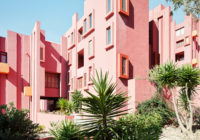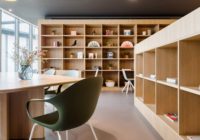Introduction
Everything has a story, whether how they are made or what they have been through to get where they are standing. However, it is the intentional message behind a designed objects embodied by an architect, artist, graphic designer, or landscape architect that gives the object more depth. The story can be as simple as a vivid image in a poem or the placement of the staircase of a building.
Architects have long strive to communicate their craft through their building imagery. This is the very reason why we have such diverse style of architecture throughout history. Whether displaying the power of their clients with the strength of a facade like the Palazzo Farnese for the Medici’s, or the inspiring Gothic cathedrals with their flying buttresses and soaring groin vaults, or the solidity of a corporation like Mies’ Seagrams Building, each communicates a message greater than the function contained within.
What is storytelling in architecture
Storytelling in architecture evolves from an introspective exploration of the client’s mission and passion; the building program or function; its site context; and often its place in history. Editing the message into a simple theme and then expanding it into a complete story creates the fullness of the experience. Materiality, structure, form and detail become the vehicles to impart the message.
Great examples


With the success of e-books and the rise of online shopping, traditional bookstores are slowly declining, unable to compete with the convenience of shopping from home. However, Studio MK27’s client Livraria Cultura realized that there could still be a place for the traditional bookstore, not as their primary way of selling books but instead as a way to boost their brand image and enhance their online sales.


To achieve this, Studio MK27 aimed to create “a bookstore with a meeting place,” where people could read, discuss literature and occasionally even hold literary events. This description of the store’s program is in many ways reminiscent of that other maligned house of books: the library.


It’s no easy job to construct a building in an area which hopes to become a natural World Heritage Site, with no access to utilities and aiming to serve a poor community which the architects describe as living there “on the fringes of legality.”
Through the building’s low, subtle massing combined with extensive use of local ash from the volcano as an aggregate in the building’s concrete walls, and as a roof and ground finish, the resulting building seamlessly blended into the landscape. By using a combination of photovoltaics, natural ventilation, rainwater collection and greywater recycling, the building was also entirely self-sufficient.


However, the real story of the building is in its sad demise in November: having been inactive since 1995, the nearby volcano erupted, destroying the Fogo Natural Park Venue and its surroundings. The Building of the Year award will hopefully be a fitting tribute to a building that deserved a much longer lifespan.


At the beginning of the 20th century, the leading cause of death in most countries was infection. Thanks to tremendous advances in medical technology, people are living longer and in Western countries are now most likely to die of cancer, heart disease of a stroke. While this is a great achievement, it requires a significant rethink of how we design hospitals, with patients often staying in hospitals for longer periods of time, or visiting as a part of a regular schedule.


In response to this challenge, EFFEKT’s cancer counseling center continues a rich architectural line, taking an ideological inheritance from the UK’s Maggie’s Centres with a space that is designed to project the comfort and warmth of a home instead of the coldness of a hospital or clinic.


Located in Press Club Hanoi, one of the most distinguished business and culinary locations in Vietnam, La Plume Bar stands out as a charming getaway for working people.


To take advantage of one of the best known venues in Vietnam, the place’s owner wanted to renovate it to a high-end bar. Home to writers and journalists since war time, the Press Club holds a special historical value. Additionally, the name La Plume of the bar itself means ‘a pen’ in French. This implies that the bar is a place to express oneself and to exchange information.



